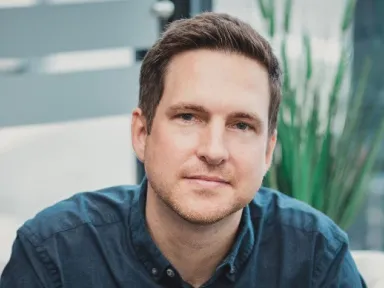Research in Chemistry Education
On the Stagnation of Innovation in Teaching
We are inferring a student's potential to stand up and speak for change in the world, by their ability to sit still and listen in a classroom.
Prof. Jason Pearson, PhD

Teaching innovation severely lags behind innovation in other areas. Is this because we have a system of Natural Selection in higher education?
The Prevalence of the “Sage on the Stage”
Most university courses could safely be characterized as adhering to a “teacher-guided”, or “traditional” model of instruction, where the instructor takes on the lion’s share of the decisions. They choose the curriculum, the course materials, they make slides, they present/lecture to the class, they craft problem sets for students to work with, the list goes on. The students’ job in this model is to simply sit and listen, and perhaps also read and practice (if they’re being proactive).
In this model the student will usually save most of their “work” to cram the night before an exam and regurgitate the information back to the instructor (perhaps without even truly thinking about it) for course credit.
This is perhaps better known as the “sage on the stage” model of instruction, and Fischer showed as recently as 2019 that it is indeed ubiquitous in higher education.
Now, I’m actually not going to weigh in too heavily on whether I think this model actually works well, but I should at least mention that there is an ongoing debate about the effectiveness of the traditional model versus a more active student-centered model dating back to at least 1993.
Critics of the traditional model say that when students are passive receivers of information they will forget almost everything they’ve heard within 30 days. There’s good evidence to support this using Ebbinghaus’ famous “forgetting curve”. Additionally, lectures generally presume that all students learn at the same pace and also fail to provide instructors with feedback about which aspects of a lesson students have actually understood. Students’ attention spans are also questionable during lectures, and they may more easily forget information they encountered in this passive manner (see above). Lectures also emphasize learning by listening, which may disadvantage students who favor other learning styles.
So it’s reasonable to suggest that there is something broken in the traditional model.
It is therefore not surprising to see a surge in “active learning” centers popping up at Universities worldwide, providing encouragement and support to students and instructors to revise their teaching and learning practice.
That being said however, the numbers don’t lie and given the prevalence of the traditional model in modern university classrooms it is highly unlikely (perhaps impossible) that a student could graduate without having to earn credit from a sage lecturing from a stage somewhere.
Natural Selection in Higher Education
So what is my point exactly? Well, consider the cycle that this situation creates.
In order to succeed in college or university, it seems that one must be able to excel within the confines of the traditional model. As such we have a Darwinian mechanism at play where only the “fittest” survive. Generally speaking only the “fittest” will be engaged and inspired in the traditional model. Only the “fittest” will earn scholarships and perhaps even elect to attend graduate school.
US census data tells us that those who elect to attend graduate school to obtain advanced degrees are particularly void of diversity. Only 13% of the population over 25 actually finish one, and of those there is a dramatic skew towards white individuals over 35 (though I’ll stress that this is not meant to be a discussion of racial bias, I promise).
We can at least say that those who seem to be excelling in the traditional model are a vast minority of individuals. Not only a vast minority of the general population but even a minority within the typical student body of a college or university campus. According to data from the National Center for Education Statistics students who earn graduate degrees make up only about 7% of the undergraduate population (when you take attrition into account).
As such we can be sure that the traditional model is at least non-optimal for many and I would conjecture non-optimal for most. Yet it will necessarily only be those who excel in this format who earn high marks and gain the commensurate academic accolades.
Now let’s finish this train of thought with a fairly obvious statistic. Who are the instructors in higher education? Almost 99% of full time academic teaching staff hold graduate degrees in their field. That isn’t surprising but let’s think about what that means. That means that virtually everyone teaching in higher education belongs to an incredibly narrow demographic of individuals. Not just narrow in terms of the usual demographics such as race and socioeconomic status, but narrow in terms of their academic habits and learning styles.
Therefore those who have become academics are the “fittest”, in a Darwinian sense, to the traditional model of instruction. They are the ones who “survived”, or more likely excelled in the traditional model, and have therefore been “selected” by it. Consequently, they are also probably the least likely to recognize structural problems within the traditional model since, after all, it worked well for them right?
This is exacerbated by the fact that research shows academics will generally teach in the manner in which they were taught, and the median age for a professor (in Canada) is 51. So not only is it true that professors are likely to see less fault in the traditional model, their first exposure to teaching and learning in higher education waslikely 30 years ago.
I’ll remind you, anecdotally, that that was a time when college students wouldn’t have even had access to an email address, let alone a smartphone. Is it really appropriate, then, to think about modern teaching and learning within that context? Virtually everything else in our lives has been dramatically transformed by technology, but the classroom (and teaching laboratory) in most cases remain shockingly stagnant.
Exacerbating Factors
The elephant in the room is the fact that most higher education instructors do not actually have any formal training in teaching or education in the first place. Therefore, they lack the high-level tools of an educational framework for structuring learning experiences and are consequently likely to simply emulate the teachers they had while in college.
Also, faculty in higher education are most often incentivized to do research, not teaching. This, after all, is where the bulk (if not all) of grant funding goes. Research is also the arena where one’s work is most evident to their peers. Publication in the primary literature, conference presentations, and research grants are the de facto hallmarks of a thriving academic career.
It’s easy to hide poor teaching effectiveness behind a strong h-index
Teaching, on the other hand, is largely done in isolation. It’s easy to hide poor teaching effectiveness behind a strong h-index. And if given the choice, I would argue that most faculty would sacrifice the former for the latter anyway. Why wouldn’t they? Realistically, promotion tends to be far more heavily swayed by strong performance in research than in teaching.
After all, it’s notoriously difficult to even assess one’s effectiveness as a teacher in the traditional model anyway since student opinion surveys are rife with interpretability problems.
All of this creates a kind of homeostasis, or steady state condition of the academic population which is, unfortunately, ideally designed to neglect the needs of modern students and stagnate the classroom and teaching lab environment.
The Cost of Stagnation
If we teach today’s students as we taught yesterday’s, we rob them of tomorrow.
John Dewey
I’m speaking from a STEM perspective here, since that is where my training and experience comes from, but I see a great cost in this stagnation.
We need diversity and creativity to solve the grand challenges of the world. That will necessarily come from a diverse group of creative people. I’m worried that our higher education system is not designed to find and recognize these individuals. This is because we are inferring a student’s potential to stand up and speak for change in the world, by their ability to sit still and listen in a classroom.
We are inferring a student’s potential to stand up and speak for change in the world, by their ability to sit still and listen in a classroom
I’m reminded of the age old proverb: We cannot judge a fish by its ability to climb a tree. Its inability to do so doesn’t make it any less brilliant or valuable to our community.
I’m proud to say that chemistry (my domain of expertise), as the “Central Science”, will play a critical role in achieving most of the UN’s sustainability goals. But I’m not proud of how we are currently addressing the recruitment and training of the next generation of chemical scientists. We are facing a severe labour shortage of professionals in STEM (see this example) and there is no time like the present to innovate, not just in the research lab but in the classroom as well.
The Solution
Ironically, I’m quite convinced that the answer here actually lies in research. Recall the fact that academics are actually quite good at that! All that is necessary is that we focus our innate curiosity on the structure of our teaching practice. What is lacking most often though is time, resources, and adequate incentive mechanisms.
This is where tools like Stemble are designed to step in. Stemble is a virtual teaching assistant for Chemistry that provides automated assessment tools (saving you time) and condenses that student data using intelligent algorithms into actionable insights. The learning analytics engine allows you to understand what is working in the classroom or lab and what isn’t. You can then iterate and use Stemble’s objective learning metrics to measure the effectiveness of your teaching on your learning outcomes (see this case study for a brief example). All for no cost to teachers.
Additionally, Stemble’s virtual laboratory allows STEM students to actually experiment with concepts in chemistry from anywhere at any time. Their lab will always be open to them and their progress will always be accessible to their teachers.
That means increased preparation for the lab, improved performance, and better engagement!
The good news is that we already know the solution to many of the problems we face with teaching and learning, they’re just not evenly distributed, or “commonplace”. We know a lot about the science of how people learn, and the strategies that are most effective at interrupting that pesky penchant students have for forgetting. The problem is that it just isn’t as well known as it should be and until now we’ve lacked tools that make it easy to follow the evidence-based best practices.
Learn more about Stemble today by booking a demo.

Prof. Jason Pearson, PhD
Co-Founder
Jason Pearson is a Professor of Chemistry at the University of Prince Edward Island, where he leads an interdisciplinary research group in computational methods for chemistry. He is also co-founder of Stemble Learning, a data-driven teaching and learning platform for chemistry classes and laboratories. He is the winner of numerous SoTL awards including the Reg Friesen Award from the Chem. Ed. Division of the CSC, The Hessian Award, The Janet Pottie Murray Award for Educational Leadership, and the Brightspace Award for Innovation in Teaching and Learning from the STLHE.